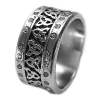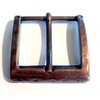CATEGORIES PENDANTS / AMULETS Antique copper CRUCIFIX-ABSX132
CATEGORIES PENDANTS / AMULETS Antique copper DAS HÖCHSTE KREUZ DER KELTEN AB
CATEGORIES PENDANTS / AMULETS Antique copper DAS NORDMANNENKREUZ AB
CATEGORIES PENDANTS / AMULETS Antique copper DIAMOND HEART AB
CATEGORIES PENDANTS / AMULETS Antique copper DRACHE AB
CATEGORIES PENDANTS / AMULETS Antique copper DRACHENAMULETT AB
CATEGORIES PENDANTS / AMULETS Antique copper DRAGONEYE DG AB
CATEGORIES PENDANTS / AMULETS Antique copper DRAGONEYE LG AB
CATEGORIES PENDANTS / AMULETS Antique copper DRAGONHEART DG AB
CATEGORIES PENDANTS / AMULETS Antique copper DRAGONHEART LG AB
CATEGORIES PENDANTS / AMULETS Antique copper FENRIS AB
CATEGORIES PENDANTS / AMULETS Antique copper FLEUR-DE-LYS L AB
DAS HÖCHSTE KREUZ DER KELTEN AB
In stock
can be shipped within 1 days
Customers who bought this product also bought
|
|
|
|
|
|
|
|
Browse this category: Antique copper
DAS NORDMANNENKREUZ AB
In stock
can be shipped within 1 days
Customers who bought this product also bought
|
|
|
|
|
|
|
|
Browse this category: Antique copper
DIAMOND HEART AB
In stock
can be shipped within 1 days
Customers who bought this product also bought
|
|
|
|
|
|
|
|
Browse this category: Antique copper
DRACHE AB
In stock
can be shipped within 1 days
Customers who bought this product also bought
|
|
|
|
|
|
|
|
Browse this category: Antique copper
DRACHENAMULETT AB
In stock
can be shipped within 1 days
Customers who bought this product also bought
|
|
|
|
|
|
|
|
Browse this category: Antique copper
DRAGONEYE DG AB
In stock
can be shipped within 1 days
Customers who bought this product also bought
|
|
|
|
|
|
|
|
Browse this category: Antique copper
DRAGONEYE LG AB
In stock
can be shipped within 1 days
Customers who bought this product also bought
|
|
|
|
|
|
|
|
Browse this category: Antique copper
DRAGONHEART DG AB
In stock
can be shipped within 1 days
Customers who bought this product also bought
|
|
|
|
|
|
|
|
Browse this category: Antique copper
DRAGONHEART LG AB
In stock
can be shipped within 1 days
Customers who bought this product also bought
|
|
|
|
|
|
|
|
Browse this category: Antique copper
FENRIS AB
In stock
can be shipped within 1 days
Customers who bought this product also bought
|
|
|
|
|
|
|
|
Browse this category: Antique copper
FLEUR-DE-LYS L AB
In stock
can be shipped within 1 days
Customers who bought this product also bought
|
|
|
|
|
|
|
|
Browse this category: Antique copper











































































